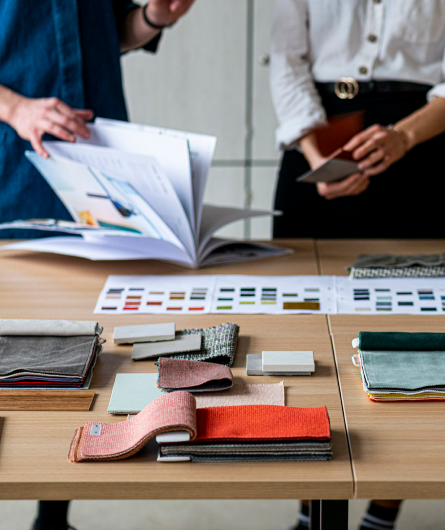
Fujitsu, Estonia
Located in Ülemiste City, Tallinn's most innovative district, this project marked the company's newest and most exciting venture in the past seven years
Fujitsu Estonia, a leading information and communication technology equipment and services company, collaborated with OCCO to create a truly unique and innovative office space in the recently completed Alma Tominga business building. Located in Ülemiste City, Tallinn's most innovative district, this project marked the company's newest and most exciting venture in the past seven years. The office was designed in close cooperation with Katrin Kaevats, the interior architect of PIN Arhitektid, and OCCO, the furnishing partner.
The primary objective of the project was to create an office space that exemplified the Fujitsu brand while incorporating distinctive elements to make it stand out. Olly Dickinson, Head of Property and Workplace Standards NWE Region at Fujitsu says "The target of the project was to design and deliver the very best workplace experience for our Estonian colleagues. The existing space was not reflective of how we were as an organisation ad whilst it was functional it did not inspire our colleagues during their everyday lives."
The new office brings together 250 employees together, emphasizing face-to-face communication while also accommodating remote work options. Sustainability and employee well-being were essential considerations for the project.
The interior design concept was centered around the Fujitsu brand identity. Working closely with Fujitsu, Katrin Kaevats, the interior architect, introduced new shades and solutions that added uniqueness to the Tallinn office. Olly comments "The story behind the space was one of movement and a flow around the floor plates, lots of daylight really helped to bring nature closer as did the selection of natural materials and palette."
Contrasting elements, such as perforated sheet metal and black details, were incorporated to create a more dynamic and energetic environment. Lighting played a crucial role, with various solutions like hidden lights, cornice light, and pendant lights contributing to a bright and warm atmosphere.
The Fujitsu office in Tallinn displayed a strong commitment to sustainability. The design included numerous plants, furniture made from recycled materials and sensor-based technologies, such as motion-sensor lighting and automated flushing systems, to reduce energy consumption.
Futher to this, Olly explains "As you would expect a large number of products are sourced by our partners, Kinnarps ad Occo, who are leading the industry in sustainability and project footprint reduction. As this project was designed during the pandemic we were very aware to ensure open spaces and excellent airflow as opposed to traditional enclosed environments."
OCCO played a pivotal role in furnishing the cutting-edge workspace, managing the project from a furnishings perspective, collaborating with the interior architect and furniture manufacturers. OCCO's expertise ensured that the unique furniture requirements were met, and efficient communication facilitated a smooth process for the customer. Railway Carriages from Spacestor in sleek black cladding and upholstery are used to enable small impromptu meetings and catch ups in a comfortable and space-efficient atmosphere.
This Spacestor booth has become a cornerstone element in Fujitsu spaces and Olly as outlines "The Railway Carriage for us is a really important design element, not only is one of the most used settings it is also one of the most versatile whether it is for formal, informal or social use, We wanted to trial the two seater variation in Tallin and it has proved to be so popular it will become the fresh standard in future projects."
The Fujitsu Estonia office exemplified modern office trends that prioritize uniqueness and functionality. With many employees opting to work from home, the use of multifunctional furniture was prevalent. The office featured acoustic couches with power outlets, providing a space for relaxation and work. Additionally, comfortable rest areas were provided, enhancing employee comfort and creating an appealing workspace that encourages employees to spend time in the office beyond their working hours.
The innovative and distinctive design reflects Fujitsu's brand identity while incorporating sustainable and employee-centric elements. This modern workplace interior sets an example of bold office design, promoting productivity, collaboration, and employee well-being.
